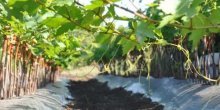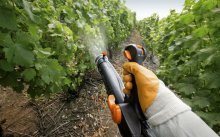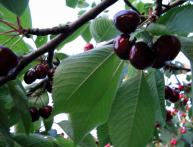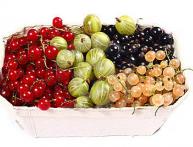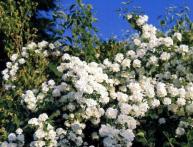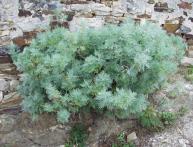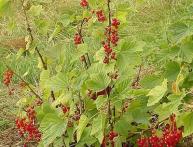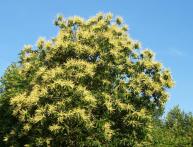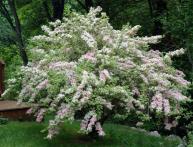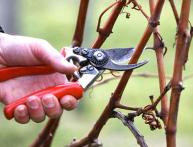Spraying grapes in spring: drugs used and technology
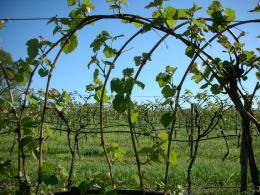
Spring spraying of grapes is an important and responsible event that helps prevent the spread of pests and diseases. In most cases, the most delicious and productive varieties of this berry are the least resistant to various fungal diseases, so it will not be possible to get a good harvest from them without preventive spring treatments.
Content
Why is spring treatment needed?
With the onset of warm days, grape pests begin to become more active, and high spring humidity provokes the development of various fungal and viral diseases. Therefore, spring processing should begin as early as possible. If this is delayed, the pest population will gain strength and then, instead of a one-time preventative treatment, a full-scale fight will have to be carried out.
In addition, spores of various harmful fungi do not sleep, and in the warm and humid spring air they begin to multiply especially actively, affecting grape plantings.
For example, in conditions of excessive moisture, an outbreak of such a dangerous disease as mildew may begin. Attention! Droplets of juice and unevenness on the kidneys can serve as a signal to begin processing. grapes. But in some cases, these signs may be absent, so it is still recommended to examine the kidneys more carefully. Sometimes they may appear completely intact, but when you press on them, it turns out that they have already been eaten from the inside.
Technology
Spring processing of grapes begins with lifting the vine onto a trellis. The first spraying is carried out until the buds open. In most regions this is usually the first half of April. For this purpose, fungicidal preparations are used that effectively destroy harmful fungi and viruses.
When processing, you should carefully spray the entire vine, trunk and sleeves; do not forget about the surface of the soil under the bushes, it can also serve as a source of infection. The preparation should be applied generously to all above-ground parts of plants without exception, paying special attention to forks and irregularities on the stems.
In the second half of April, with the onset of stable positive temperatures, pests begin to become active. If you do not fight them at this time, they can cause significant damage to the buds that are beginning to swell.
With too much pests The treatment is repeated after 10 days. For spraying, it is best to choose a dry, warm day without wind, only in this case the drugs will be most effective. The last spring spraying of grapes is carried out at the end of May after the end of the flowering period.
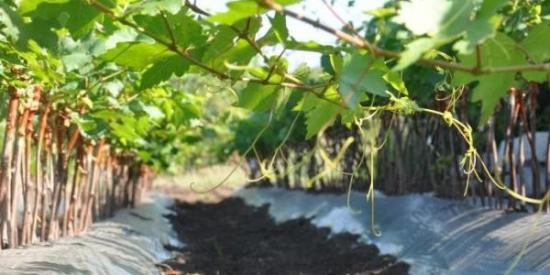
For this, a mixture of fungicidal and insecticidal preparations is usually used, which destroys both pests and pathogens. Attention! Before preparing a mixture of certain drugs, you should carefully read their instructions for compatibility.
Drugs used
At the moment, there is a fairly large number of different preparations intended for treating grapes against pests and diseases. They can all be divided into two large groups:
- insecticides
- fungicides
Insecticides are drugs intended to kill pests. The most common of them at the moment are drugs, which will be discussed further.
Nitrafen. Used to kill wintering insect pests. It is a paste-like mass of brown color, which has the ability to dissolve well in water. Most often used to destroy eggs of pests and mites overwintering on the bark. Also effective against pathogens of fungal diseases. To process grapes, a 2-3% solution is prepared from it.
Video about proper spraying of grapes in spring:
Karbofos. It is a broad-spectrum insecticide with a fairly high degree of toxicity for warm-blooded animals and humans. Therefore, flavorings with an unpleasant odor are always added to it. Disadvantages include low resistance to atmospheric moisture and a short period of action.
Actellik. It is a broad-spectrum drug against sucking and leaf-eating pests. It has a contact mechanism of action, so processing using it must be carried out quite carefully.
Fungicides are drugs designed to combat various diseases of both fungal and viral nature. The most common among them are the following:
- Bordeaux liquid. It is a copper-containing preparation. When processing, the recommended dosage must be strictly followed.Otherwise, the development of young shoots may be inhibited.
- Ridomil. Currently, it is the most common preparation for processing grapes. It has very low toxicity, which is combined with high efficiency, even in rainy weather. The period of protective action of this drug is up to 2 weeks, depending on weather conditions.
- Strobe. Systemic fungicidal drug. Has the ability to be distributed throughout plant tissues. In most cases, it begins to act within a few hours after treatment.
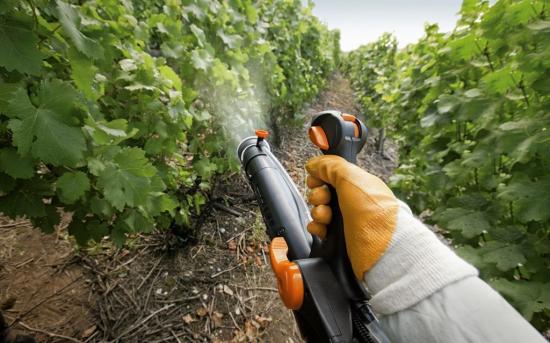
Spring preventive treatment of grapes is a very important step in the process of growing grapes. It allows you to destroy pests and illnesses at the very beginning of their development and prevent their further spread.

